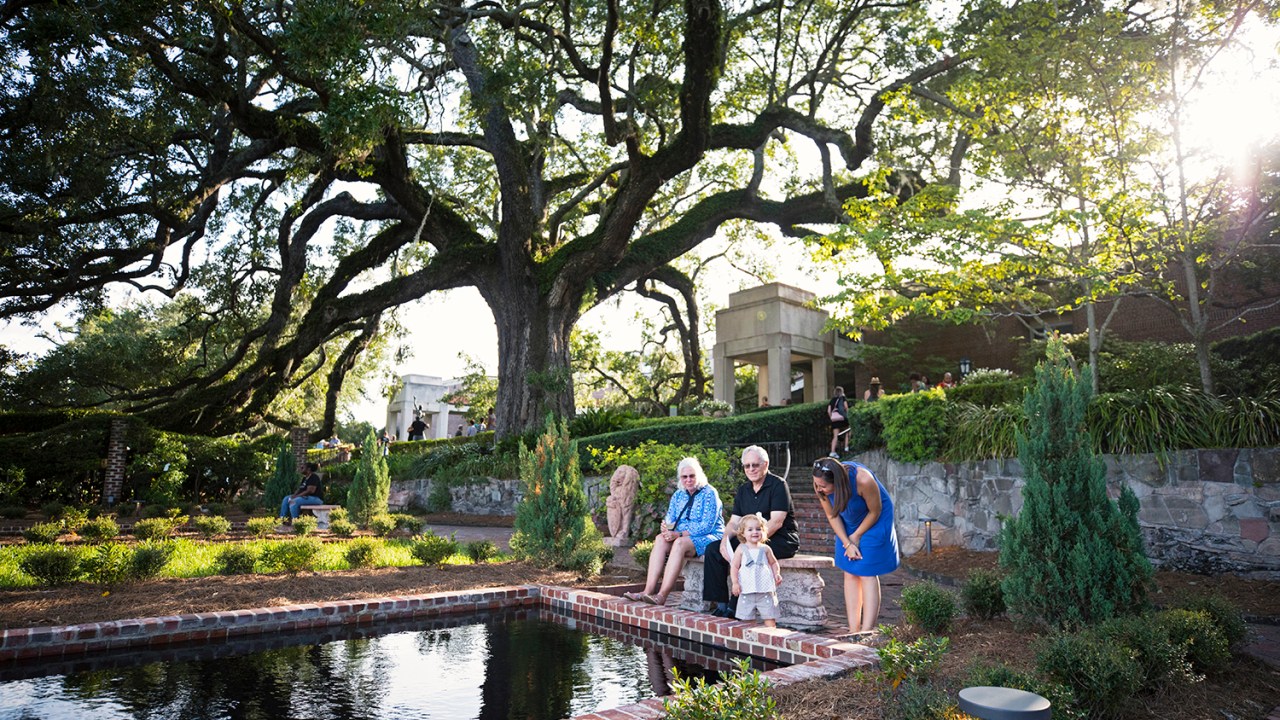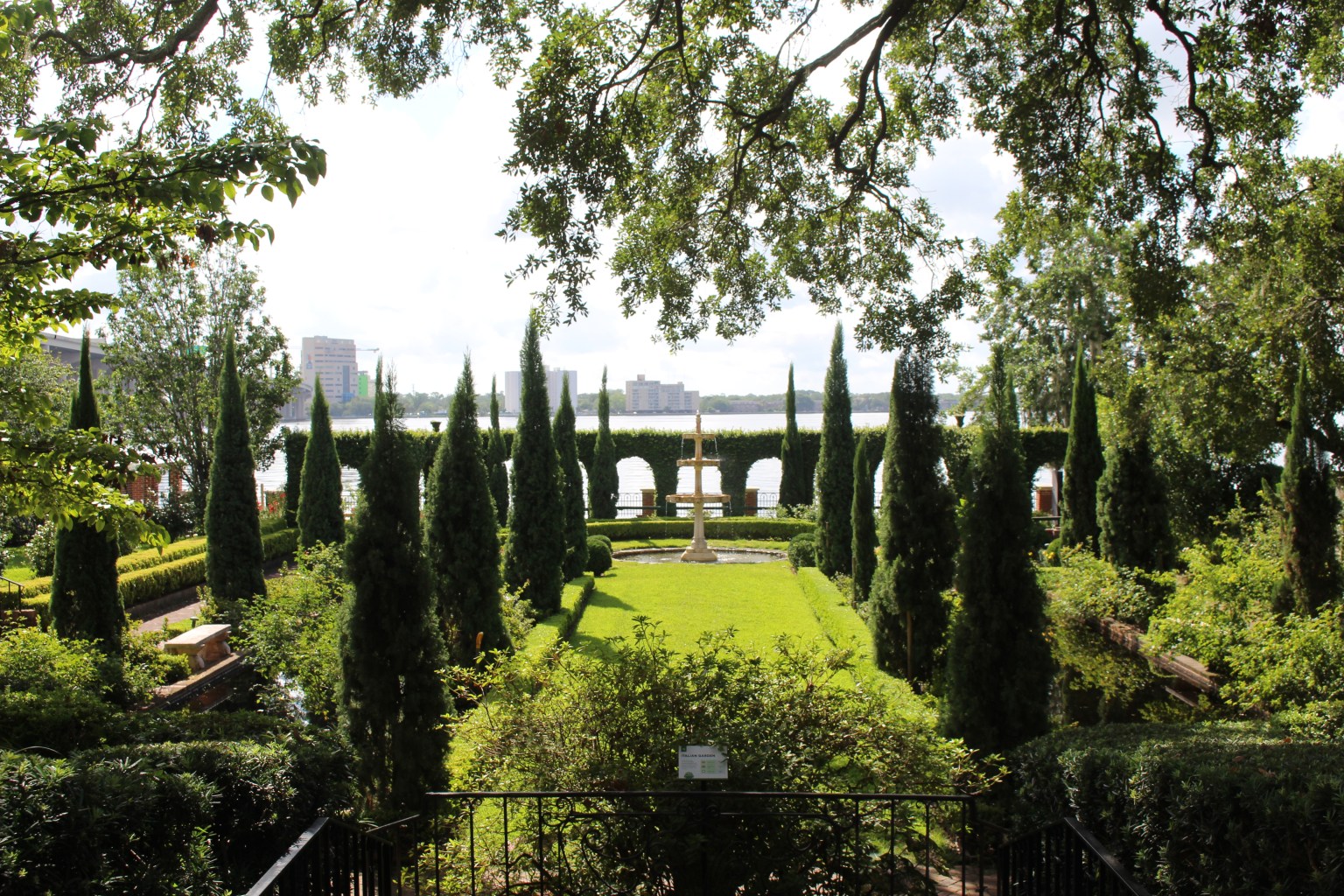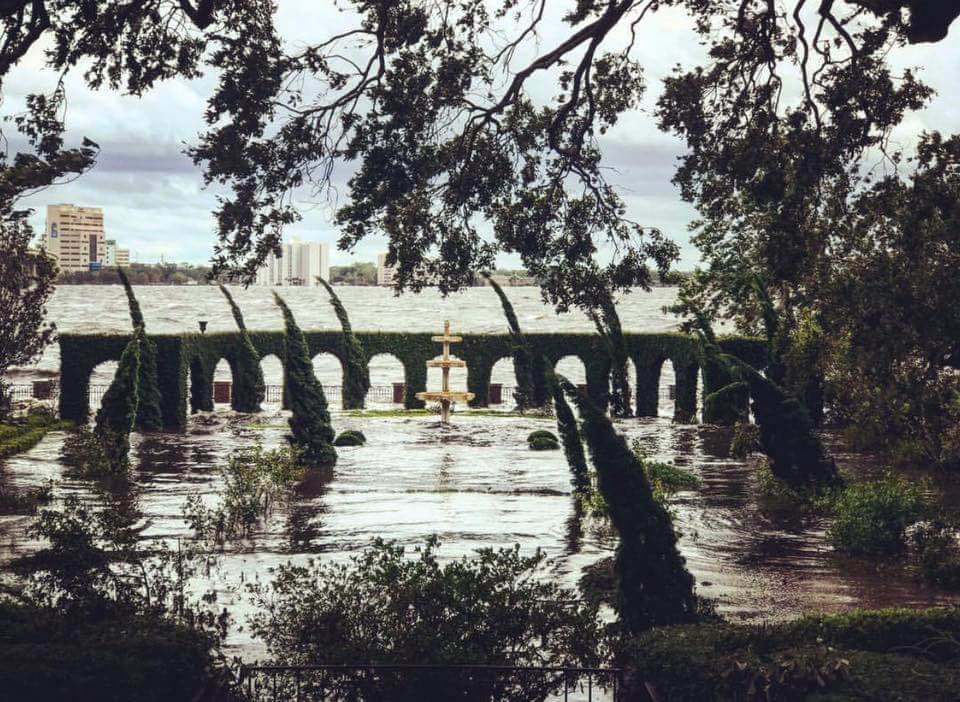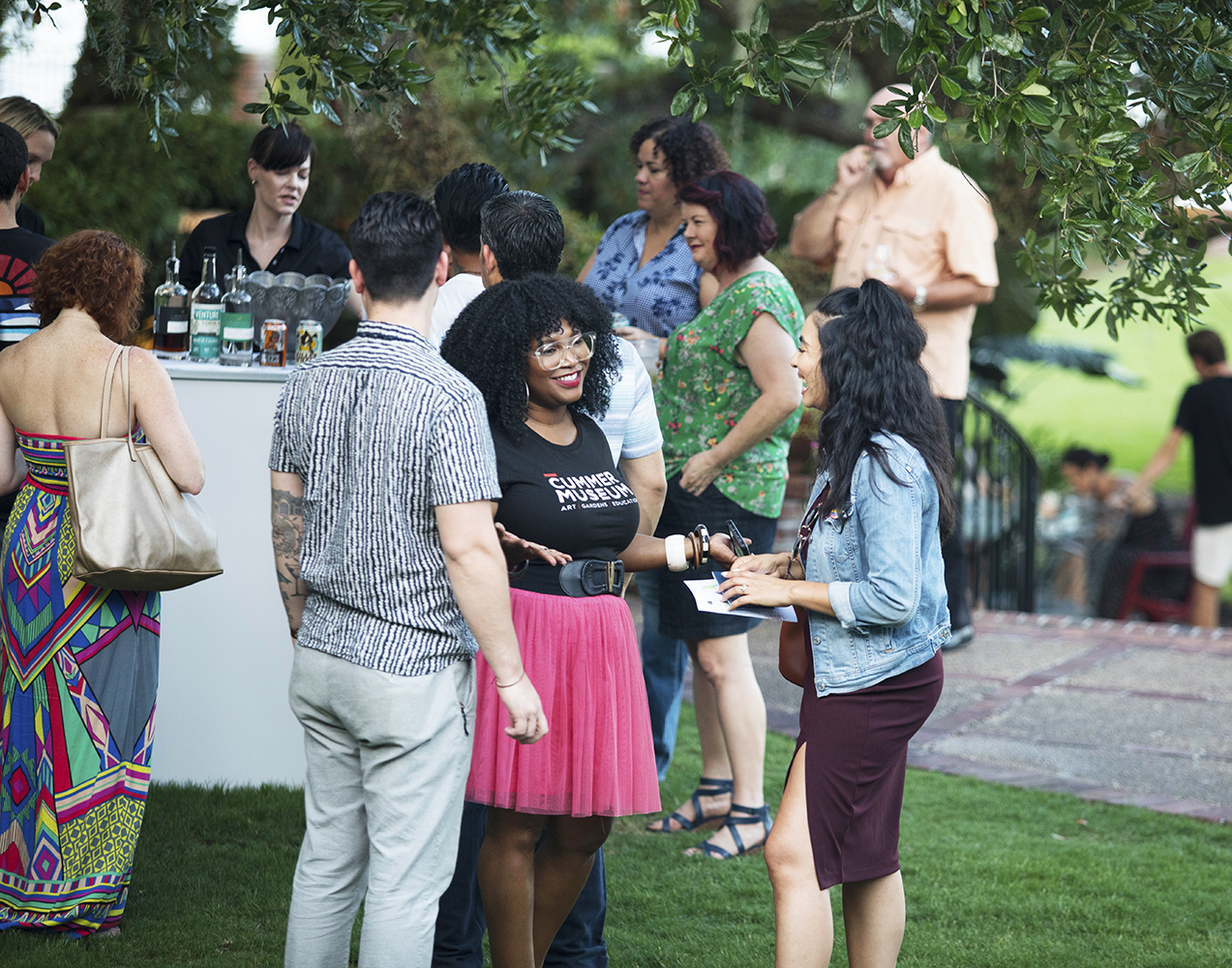
Like many museum professionals, I am drawn to the idea that objects and places connect us to cultures throughout history. We handle the works entrusted to our institutions with extreme care, in no small part because these links to our past have the power to help us make sense of the world we experience today.
This idea took on new meaning for me when I accepted the opportunity to serve as the Director and CEO of the Cummer Museum in Jacksonville, Florida. As I joined the team in January 2019, the institution was addressing one of the most significant challenges of its nearly sixty-year history: the total reconstruction of its historic riverfront gardens, following damage from Hurricane Irma.
The Cummer Gardens—composed of the English Garden, Italian Garden, and Olmsted Garden—are stunning spaces that once served as the personal gardens of Ninah Cummer and her family. Mrs. Cummer’s passion for horticulture and foresight in hiring an incomparable group of landscape architects made these spaces into distinguished examples of early-twentieth-century garden design, recognized on the National Register of Historic Places since 2010. Many important landscape architects played significant roles in their development, including Ossian Cole Simonds, a prominent Midwestern landscape architect who gave the gardens their preliminary form in 1903; Thomas Meehan and Sons, a Philadelphia firm that designed the formal gardens; Ellen Biddle Shipman, the “Dean of American Women Landscape Architects,” who designed the Italian Garden; and the fabled Olmsted firm of Massachusetts, which was involved in later phases of landscape improvements.

The Cummer Museum’s position along the mighty St. Johns River affords visitors magnificent views, but these views come with substantial risk. In September 2017, Hurricane Irma swept through Jacksonville, causing severe damage to properties and communities along the waterway. While our staff, galleries, and building were not substantially affected, the Cummer Gardens—which are the most precious works in our permanent collection—sustained extensive destruction.

We believe the lower tier of all three formal garden spaces remained submerged in about four feet of water for more than twenty-four hours, resulting in uprooted plants, detached railings along the river, broken lighting, pervasive salinization of the soil, large amounts of debris, and significant impact to much of the physical infrastructure—including drainage, electric, fencing, and the well that services the landscape. Perhaps the best way to describe the extent of the damage is with the following fact: after the hurricane, the UF/IFAS Duval County Extension Office conducted regular soil testing to measure the damage caused by the salt water, and only cleared the soil for planting after four months of irrigation.
As the team developed a plan for reconstruction, historical accuracy and integrity were of the utmost importance. Leadership worked with vendors and contractors to fully assess the situation, make immediate repairs as soon as possible, and create a plan and timeline to fully reconstruct the gardens. I joined the team in January 2019 and set about raising the $1.3 million needed for reconstruction. We selected WLA Studio, an award-winning landscape architecture and planning firm based in Athens, Georgia, to lead the project. The firm’s experience in both historic landscape preservation and environmental design was critical to our goal of preserving the atmospheric intent of the original gardens, while making necessary adjustments to reflect modern-day climate and soil conditions. A comprehensive project team managed by Danis worked alongside WLA Studio.
The Cummer Gardens contained a variety of historic plant materials, including many species that were planted in Mrs. Cummer’s time and are no longer commercially available. Museum staff, therefore, have had to work to propagate the specimens that remained on the property, adding a unique challenge to our project.
Funds for the effort came from grants and private donations from several benefactors, including the National Endowment for the Humanities, the Conservation Center for Art & Historic Artifacts, the State of Florida, the Garden Conservancy, and the Garden Club of America’s Restoration Initiative. We are deeply grateful to all of these groups for their support.
While it will take a few planting cycles for the gardens to return to their former glory, we can now say that we are firmly on the path to having restored this institution’s crown jewel. After the six-month reconstruction, the gardens officially reopened to the public this summer.
We chose to look at these newly restored spaces through the lens of strategic pillars that will define the museum moving forward: quality, access, and fun. Quality already typified our remarkable gardens, so our goal was to create new and innovative experiences that guests of all ages and interests could enjoy. One of these experiences was our Summer Fridays program, sponsored by PNC Bank, where we offered free admission to our permanent collection and gardens every summer Friday during extended hours, providing a new way for the community to kick off the weekend, with live music on the lawn, games for the whole family, an extended liquor license (perfect for perusing the gardens with a cocktail in hand), and more.

Our team saw approximately nine thousand visitors to the gardens during the Summer Fridays series, with more than twelve hundred visitors during the final event—a notable figure because mere days before the final celebration, Hurricane Dorian crawled up the Atlantic coast of Florida. The approach of Hurricane Dorian gave us the opportunity to activate extraordinary precautions to safeguard the gardens. Most notably, we installed a nearly four-foot-tall temporary sea wall at the garden bulkhead, distributed several pumps throughout the gardens, and relocated our most fragile plants. Thankfully the storm’s impact on our city turned out to be relatively minor, but we are now confident we have a plan to mitigate future risk.
This fall, we are continuing to celebrate the reopening of the gardens through the launch of Louis Comfort Tiffany: Treasures from the Driehaus Collection. Tiffany drew extensive inspiration from the natural world, and we anticipate this alignment of our own gardens with his stunning works will inspire guests of all ages.
The reconstruction of the gardens could serve as a metaphor for my whole tenure at the Cummer Museum of Art & Gardens thus far. The team and I have been thoughtful and deliberate in our approach, but decisive in our actions, inspired every day by Ninah Cummer’s vision of creating a place of beauty for all of Jacksonville. This vision has always been rooted in the special history of the gardens.
Now, we have the privilege of helping these spaces—and the northeast Florida community—bloom.
About the author:
Adam Levine, Ph.D., an AAM member, is the George W. and Kathleen I. Gibbs Director & CEO of the Cummer Museum of Art & Gardens in Jacksonville, Florida. Adam assumed his role of CEO in January 2019. His career in museums spans over 10 years, with experience working with the Toledo Museum of Art and the Metropolitan Museum of Art. His vision for the Cummer Museum places an emphasis on quality, accessibility, and fun.








